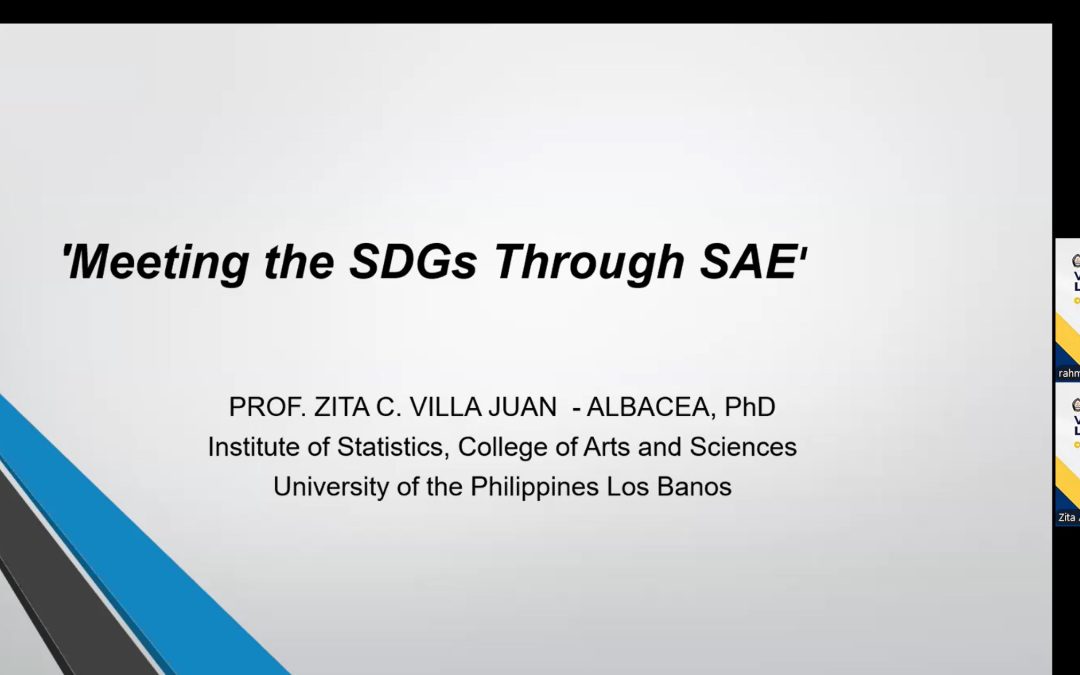The Department of Statistics, Faculty of Science and Mathematics (FSM), Diponegoro University (UNDIP), organized a virtual public lecture through the World Class University (WCU) Visiting Professor Online Program. The event, held on Tuesday, June 10, 2025, was coordinated by Alan Prahutama, Ph.D., a faculty member of the Department of Statistics at UNDIP.
The session began with welcoming remarks from Dr. Eng. Adi Wibowo, Vice Dean for Resources at FSM UNDIP. In his remarks, he emphasized that the Sustainable Development Goals (SDGs) represent a field that can be explored through statistical science as a foundation for informed decision-making. He also expressed hope for future international research collaborations, particularly those contributing to development efforts aligned with the SDGs.
The keynote speaker was Dr. Zita C. Villa Juan Albacea, a professor at the Institute of Statistics (INSTAT), College of Arts and Sciences, University of the Philippines Los Baños (UPLB), Laguna, Philippines. Dr. Zita is a recognized expert in the field of Small Area Estimation (SAE) and has been involved in several SAE projects commissioned by the Philippine Statistics Authority (PSA), the Asian Development Bank (ADB), and UN Women. Her presentation was titled “Meeting the Sustainable Development Goals (SDGs) with SAE.”
Dr. Zita began her presentation by introducing the 17 SDGs and their key components. She emphasized the critical role of data in supporting decision-making to achieve these goals and highlighted the importance of statistics as a governmental tool for evidence-based policy formulation.
She explained that while survey data is commonly used for SDG measurement, it is typically suitable only for estimation at broader administrative levels, such as provinces or districts. When applied to smaller geographic units, the resulting estimates tend to have high variance. SAE addresses this challenge by enabling the estimation of population parameters in small geographic areas or sub-populations (such as sub-districts or villages) where sample sizes are limited.
Dr. Zita elaborated on the steps involved in SAE modeling, which include:
- Identifying the purpose of the SAE model;
- Selecting relevant indicators for model development;
- Defining the desired level of aggregation;
- Determining the datasets to be used;
- Identifying the appropriate computational software;
- Selecting the modeling approach;
- Estimating the SAE model;
- Evaluating the quality of the estimates;
- Presenting and interpreting the model results.
She explained that SAE can be approached using either direct estimation or indirect estimation methods. Direct estimation uses survey data specific to the small area but often results in high variance and lower accuracy. Indirect estimation, on the other hand, relies on model-based methods that leverage auxiliary information. This approach is more common in SAE applications and includes techniques such as the Fay-Herriot model, Hierarchical Bayes, and Empirical Best Linear Unbiased Prediction (EBLUP). According to Dr. Zita, SAE enables significantly more accurate modeling for small area statistics.
This public lecture served as an insightful exploration of how advanced statistical methods can contribute meaningfully to the achievement of SDGs, particularly through data-driven modeling and evidence-based policymaking.

